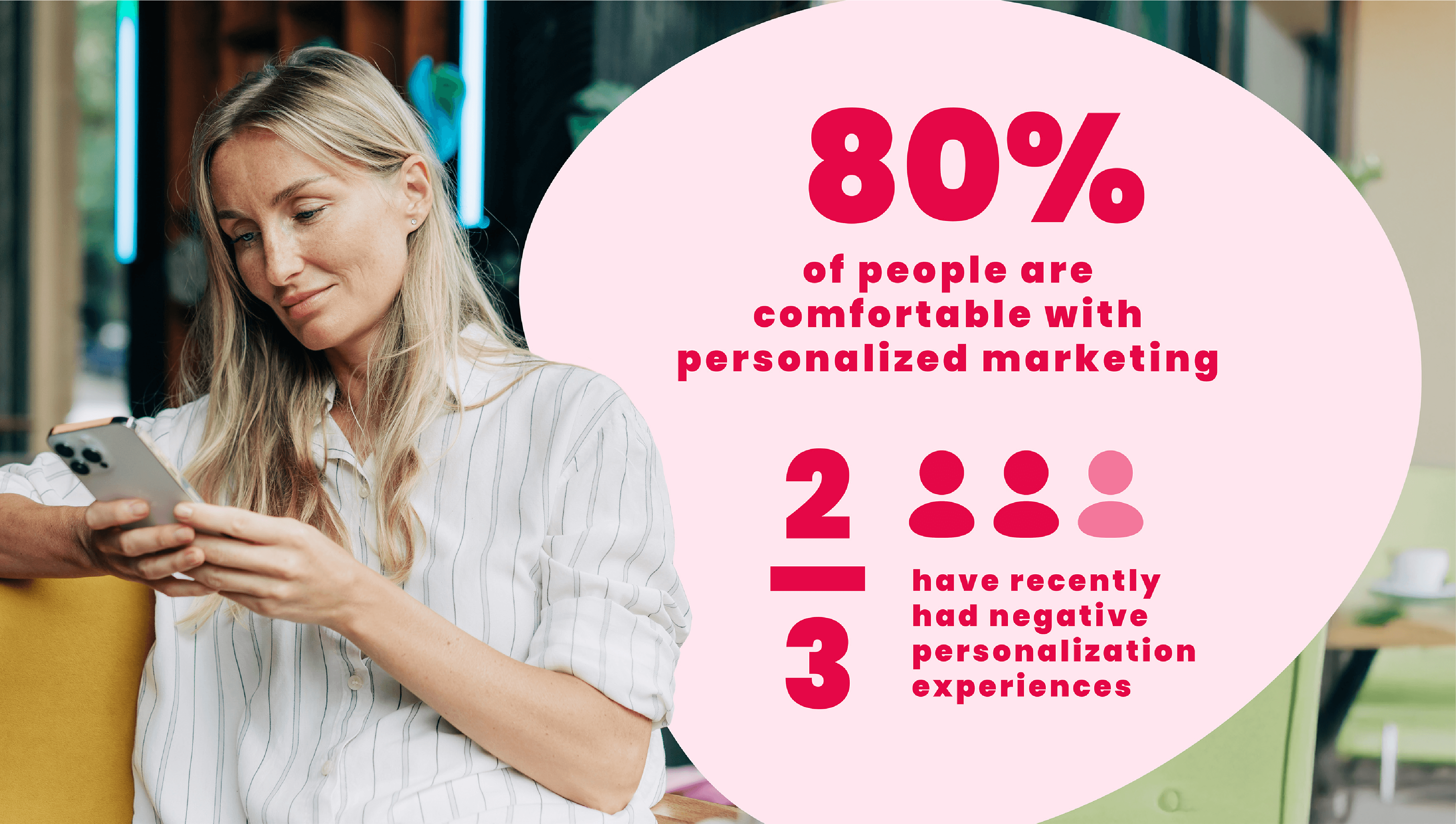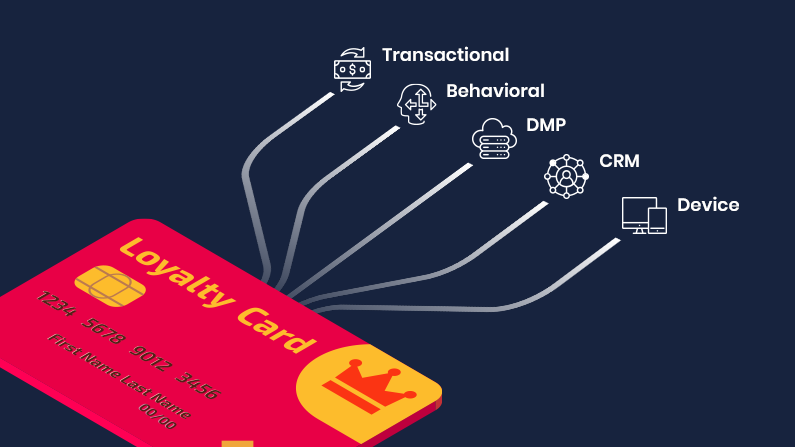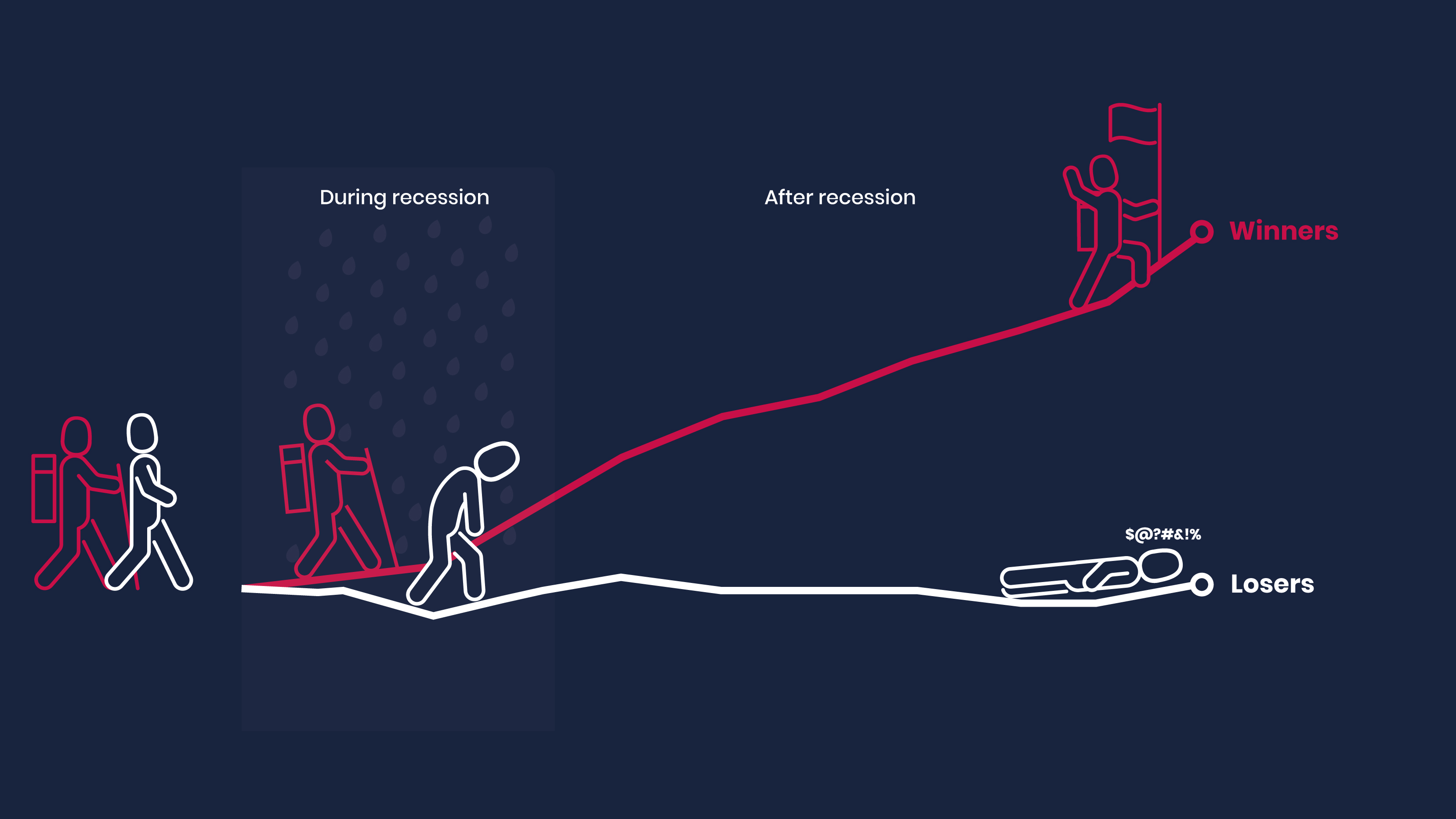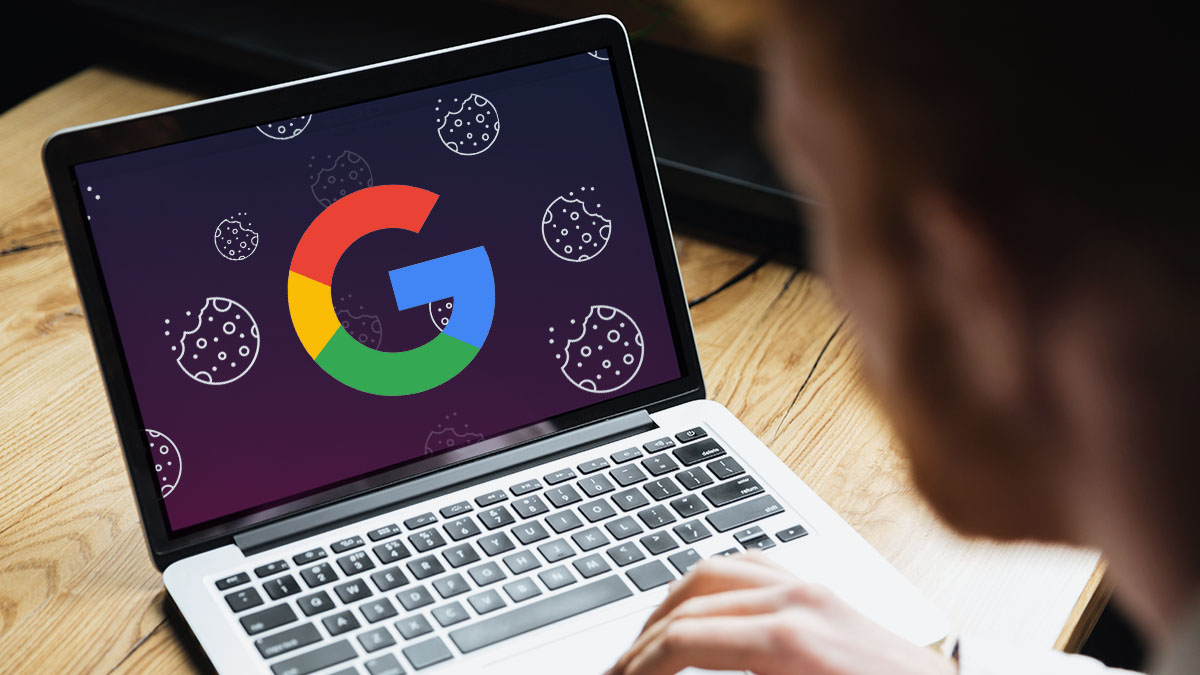The End of Third-Party Cookies: What Should You Do?
Apr 15, 2021 | CDP, 3rd Party Cookies, Customer Data Platform, GDPR
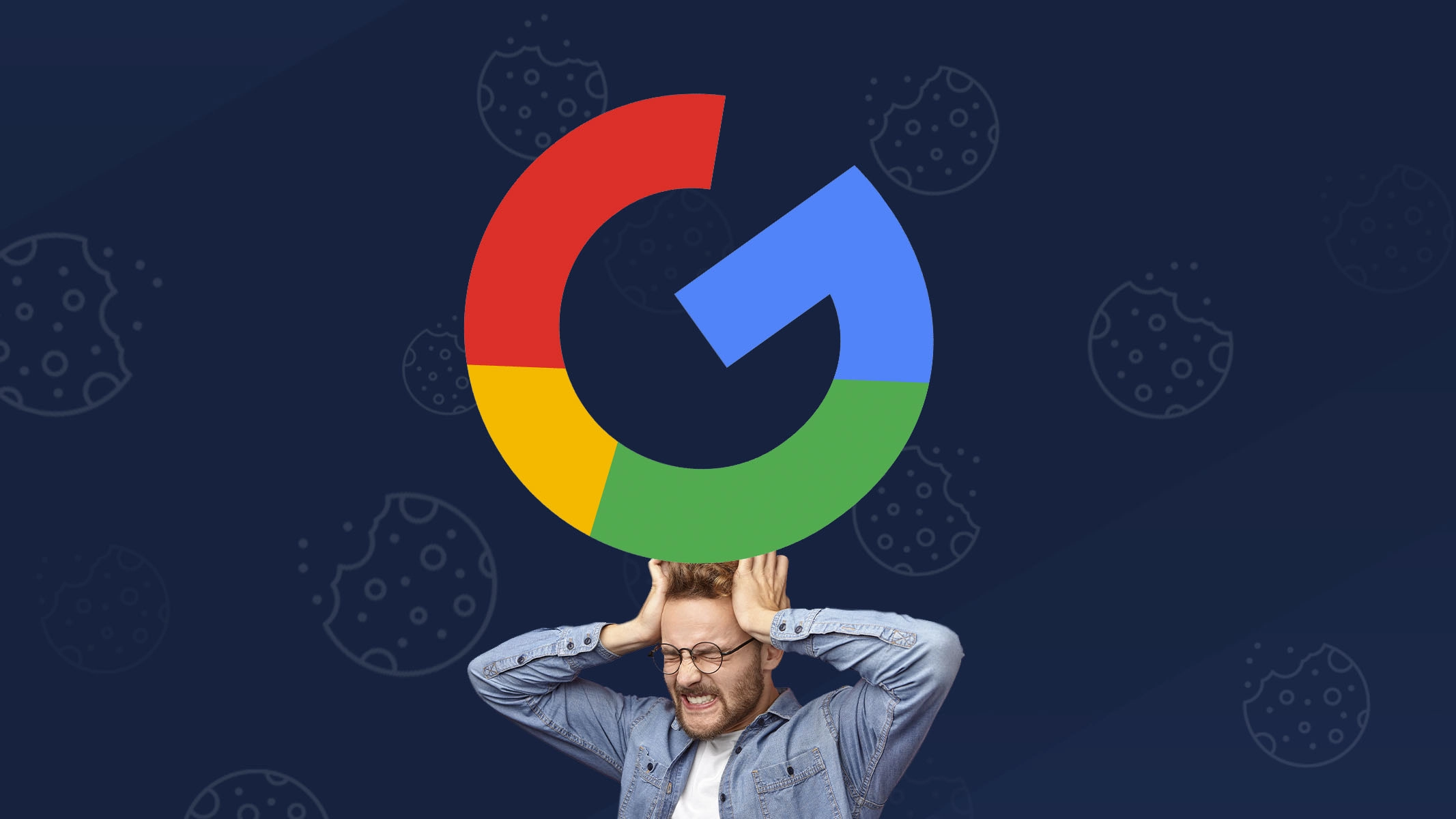
This is quite the gamechanger since Google accounts for 66 % of the global market share.
If you are relying on revenue from ads (and the fact that you're reading the article means you probably are), this will – for sure – affect your bottom-line.
How you should react to the cookie phase-out
The clock is ticking and by 2024, Google’s will initiate the gradual phase-out of third-party cookies.
So, what should you do?
In this blogpost, you get three concrete actions to take today.
This way you will be armed, prepared, and able to survive the fast-approaching death of third-party tracking.
NB! If you need a quick breakdown of the different types of cookies, head down to the end of this blogpost for more details.
First of, don't panic...
If you are already panicked by the idea of all your cookie-fueled marketing strategies disappearing into thin air, take a deep breath.
This is not the end of cookies, or advertisement altogether.
But it is a phasing out of cookies handled by third parties – and with that, also the end of a not-so-private advertising strategy, where users have no idea what data is being used by whom. For most of us, that change is wanted and welcome!
First-party cookies, used only on your own channels, are still safe.
These are the ones Google (and other browsers) want to promote to meet users’ increasing demands for more privacy online. In fact, Google called first-party relationships vital for online businesses in the future.
So, this is where you want to be heading; towards data you gain across paid and owned channels, towards creating relationships with your visitors and customers, so the customer considers the exchange of data to be transparent and fair.
A Customer Data Platform is the optimal tool for this. But more on that later!
When third party cookies are gone, tracking of users’ behavior across digital platforms will change.
To help you prepare for a third-party cookie free world, here are three actions you can take today:
Learn how to personalize your customer experience across all cross points and channels
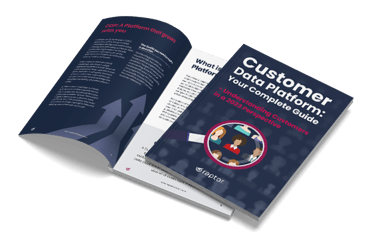
The Customer Data Platform (CDP) solves one of the hardest challenges facing businesses today: To unify customer data across the organization, including known user data, to deliver truly consistent customer experiences across channels.
1. Recognize the phase-out as an opportunity
Rather than seeing this as a final stop, you should look at this as an opportunity.
Join the game, embrace the opportunities within a persistent first data and consider how your business can become more privacy friendly. Talk to your trusted partners or advisors about how they are handling third-party cookies to plan for a different future. Maybe your website needs to be updated or you need new marketing strategies – now is the time to act.
Why you should dare to invest in Marketing Technology during a crisis.
It is important to keep in mind that third-party cookies are incredibly short-lived (either they qare instantly blocked or they die within a month). This makes it impossible to recognize a returning customer, and thereby even harder to predict behavior or personalize content for future visits.
First-party-cookies, however, can be stored indefinitely (if you have good reason for it) and thereby provide you with the opportunities to dive deep into your customer data, connect behavior across products, audiences, channels and platforms. If you know how.
2. Start collecting data today
“What’s the rush?” You might be thinking.
The phase-out has been postponed quite a few times, and who is to say that it won't be postponed again?
Though that is true, the fact is that the longer you wait before you start collecting first-party data, the more ROI you risk losing to any competitor who has a stronger first-party data setup than you do.
It can take years to build a solid base of customer data (e-mail, phone number and customers ID’s) and it requires a solid effort from your marketing team that need to know, how to exchange value for customer data.
So, while your competitors have used the last year to stock up on e-mail addresses, create member clubs, loyalty programs or other campaigns to attract leads and data consent, you waited around to see if everything stayed the same.
Start today and consider the collecting phase necessary for when “winter is coming”.
6 ways to convince your customers to share their data with you.
Customers need to understand why they are giving marketers their data. It builds relationships and encourages trust as they know this permission also benefits their experience on your site, through personalization of content.
3. Consider a Customer Data Platform
A Customer Data Platform (CDP) enables marketers and advertisers to unify first-party customer data across identities, platforms, and channels – both offline and online. These are necessary in a future, where third-party cookies are banned.
While a CDP can make use of third-party cookies, it is made to make the most of persistent customer data, like behavioral data, buy data, e-mail addresses etc. In other words, a CDP relies on a relationship between a business and its customers, as data is the fuel that keeps the engine running.
Clicks in e-mails, time spent on product pages, interaction with customer support, purchases made in shops, profile data and other types of information from across your business are merged into the platform to understand behavior and personalize experiences. This allows a more qualified tracking, and as a result a more accurate communication to customers.
Guess what? A CDP even allows you to calculate the future value of your customers through CLV!
In short: Forget about the flimsy and inaccurate marketing that is a result of third-party cookies. By taking ownership of your data, you create much more precise audiences and more well-targeted messaging that resonate with customers and actually generate sales.
We promised you a breakdown of the different types of cookies – here you go:
Not all cookies are the same
Essentially, cookies are pieces of code that are saved by websites onto a user’s web browser. Not all cookies are the same. Some are downright essential for every webpage to function properly, while others only serve advertisement purposes. Cookies are managed differently depending on the browser and have different permissions.
Third-party cookies
Third-party cookies are tracking codes set by domains other than the ones the visitor is currently visiting. These occur when a publisher adds third-party elements to their website.
You probably recognize them as the ads that follow you from page to page after you have visited a webshop.
As an advertiser or someone working in marketing, third-party cookies allow you to learn about your web visitor’s online behavior (such as visits, purchases and other data reflecting your behavior). With this data, you can build profiles and gather these into audiences for you to retarget your products.
However, third-party cookies make it almost impossible to secure customer privacy - and they are often collected without consent. This also means that it's impossible to know where the data stems from.
Flimsy data = flimsy marketing.
First-party cookies
When you visit a website, a first-party cookie is set on your browser.
First party-cookies collect data about visitors’ behavior, such as clicks on site, abandoned basket, transactional data, the number of users and sessions, which products are most popular etc.
The purpose of these cookies is to collect data that help you enhance the customer experience on your site. When used correctly, it helps you deliver much more personalized product and content recommendations, send out personalized trigger mails, and build meaningful audiences that you can target in your paid media.
Importantly, these are the cookies that your visitors willingly share with you. By allowing cookies, you can lawfully track your user's movements around your channels and create tailored experiences as they go. These are also the data you collect through loyalty programs and VIP memberships, where you offer special discounts or benefits in exchange for data like e-mail addresses, birthdays etc.
In other words, these are the data you want to invest in! They make for the best customer experiences and you - and you alone - own this data.
Other types of cookies…
Session cookies
Session cookies are essential for customer experiences. These usually expire immediately or a few seconds after a visitor leaves the web browser.
Without session cookies, e-commerce websites would not be able to remember a product placed in the basket before the user reached the checkout page. These are critical for the webpage to work properly.
Persistent cookies
Persistent cookies can be stored on a user’s device for years to help remember information, settings, preferences, or sign-in data that a user has previously saved.
When users visit a website, these choices are saved and can help the user experience. An example of persistent cookie is when a website remembers your passwords and e-mail address long after you have closed the tabs and turned off your computer.
These are a major help for users who go back forth between webpages. While you can easily do without them, their basic functionality is what helps smoothens your user experience online.
Related Content
You might also like
For years, marketers have been promised “personalization at scale.” You’ve probably heard it...
Learn More
Do you transform your Black Friday encounters into lasting relationships? Or do you let this annual...
Learn More
No reason to sugarcoat it. E-commerce is facing a lot of challenges right now. Chinese giants like...
Learn More
It’s a name that’s impossible to ignore. No matter how hard you try. TEMU. The Chinese giant has...
Learn More
Stakes are incredibly high in fashion. With a global market value of predicted to reach 1.2...
Learn More
Loyalty is key No matter what corner of e-commerce you’re in, everyone can agree on one thing:...
Learn More
Like lots of marketers, you may have been told to find a way to achieve the same (or maybe better!)...
Learn More
We are all feeling the crisis (or rather, a series of crises one after another). It affects our...
Learn More
In 2020, Google decided to phase out third-party cookies, and they recently added a final nail to...
Learn More
When you work in ecommerce, you know the traffic during Black Friday is certainly higher than...
Learn More
Let us show you what you can achieve with premium personalization


A Raptor expert can share more about the product and answer any questions you have.


